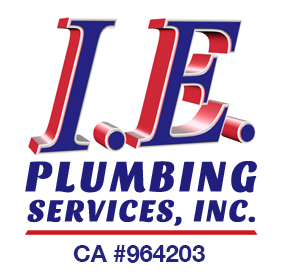
As the most common of all plumbing problems, sewer cleaning, and drain cleaning is sometimes used to mean the same thing. Even though they really are different. That’s not surprising as one often leads to the other. From time to time we hear a customer ask “it’s my sinks that are backing up, not my toilet… why do I need sewer cleaning?”
These two problems do go together — they’re literally connected. You probably already know that toilets directly connect to a sewer line. All your drains — sinks, showers, bathtubs, washing machine — all eventually connect together and also end up connecting to your sewer line. Sometimes called a sewer main, that pipe then runs from the building out to the city sewer system on the street. Or to your septic tank if you’re out in the country.
So if a single fixture is causing you grief, you likely only need that one drain pipe cleaned to resolve the problem. But if several are having problems the blockage is probably somewhere in the shared sewer line.
Drain Cleaning
Drain pipes start out small, around 1 1/2″ in diameter. You can see their start under a kitchen or bathroom sink. As more fixtures are connected together the diameters get a little bigger.
- Problems with kitchen sinks are typically the result of grease, cooking oils, and food debris building up. In the bathroom, the culprit is most likely hair and soap scum. Toilet backups are usually the result of something getting flushed that shouldn’t have been.
- We suggest using a plunger is your first line of attack. You may want to try liquid drain cleaners. They’re based on sodium hypochlorite, a type of bleach. Given a little time they can work fairly well on hair clogs, no so well on grease. For that, an enzyme-based drain cleaner is usually better. They need to be left to work overnight. But never use acid- or lye-based products as these can indeed damage pipes. Even plastic pipes.
- If that doesn’t get things back to normal then it’s time for a plumber and drains snaking, more technically called cabling. They’ll use various attachments on the end of a long cable that they force down the drain, scraping, and cleaning as they go.
Sewer Cleaning
Home sewer pipes are typically 4 inches in diameter, often much larger for commercial buildings. Running all the way out to the street, it would take a lot of drain cleaner (or effort cabling) to clean these lines.
- In many cases cabling is the best approach; the equipment is simply larger.
- Sewer pipes can have more types of problems than drain pipes. Flushed foreign objects often make it to the sewer line, and tree roots can invade the line, requiring an auger attachment on the cable in order to cut through the blockage.
- Other problems include the sewer line itself corroding, cracking, or even collapsing. A sag (“bellying”) or inadequate slope can also lead to slow-draining fixtures and make grease and grime build up all the faster.
Hydro jetting
Hydro jetting uses high-pressure jets of water to clean the insides of pipes far more thoroughly than cabling. It’s often the best solution to stubborn or recurring problems. It can be used for both drain cleaning and sewer cleaning but is more often used on sewer lines.

 951-375-9599
951-375-9599